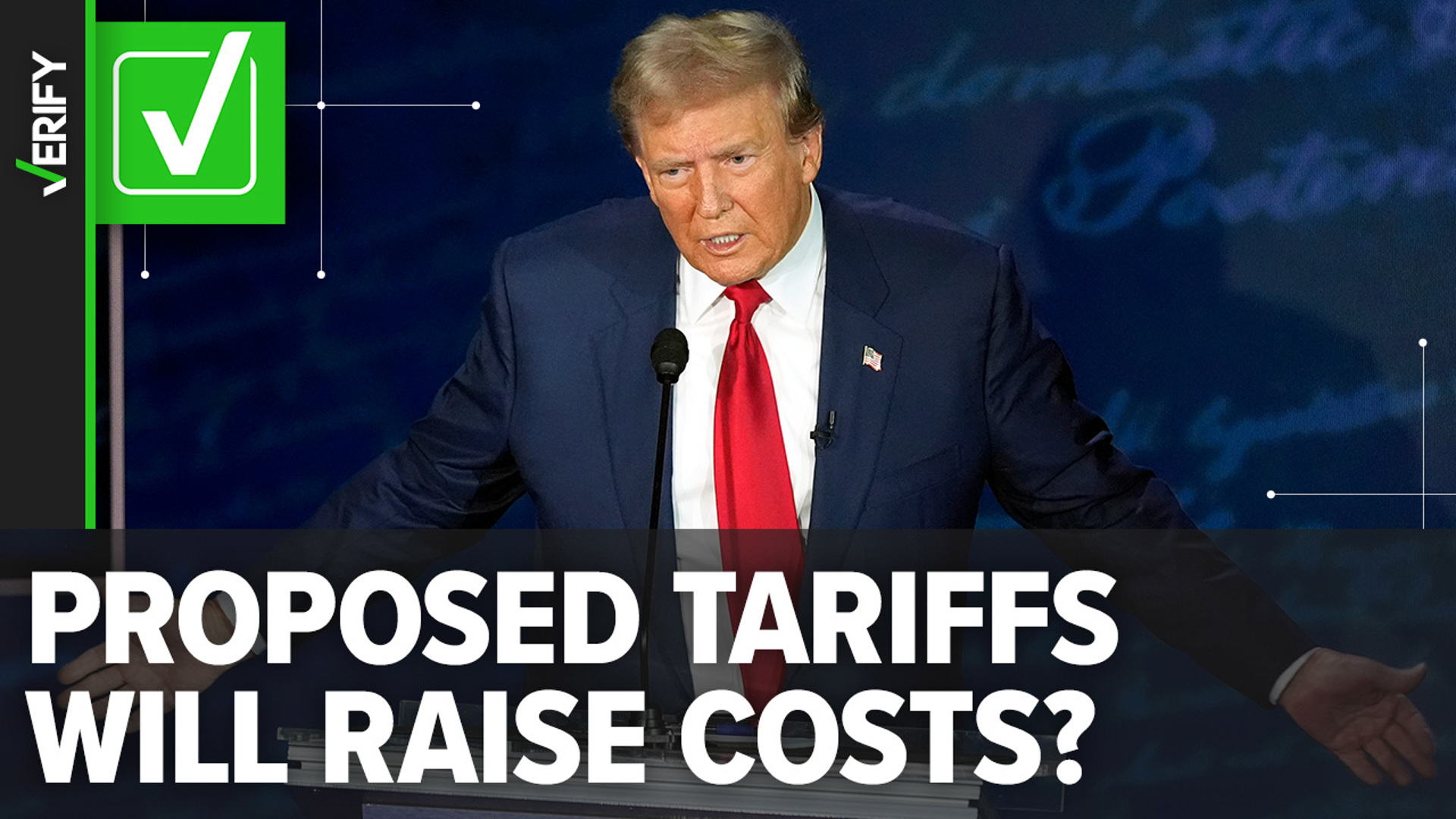Analyzing Trump's Policy: The Transgender Military Ban And Its Double-Speak

Table of Contents
The Official Justification: Military Readiness and Combat Effectiveness
The Trump administration justified the transgender military ban by claiming it was necessary to maintain military readiness and combat effectiveness. Concerns about healthcare costs associated with gender transition treatments, potential disruptions to unit cohesion, and the overall impact on combat effectiveness were cited as primary reasons. However, these justifications lacked robust empirical evidence and were widely contested.
Counterarguments highlighted the lack of evidence linking transgender service members to decreased readiness. Numerous studies and reports indicated that transgender individuals serve effectively and contribute significantly to the military. The ban, critics argued, disproportionately harmed highly qualified individuals, weakening, rather than strengthening, the military's capabilities.
-
High cost of healthcare transition treatments: While the cost of transition-related care was cited as a concern, this argument ignored the relatively small percentage of the overall military healthcare budget such costs represented. Furthermore, the argument failed to account for the long-term cost savings associated with retaining highly skilled and motivated personnel.
-
Claims of potential disruption to unit cohesion and morale: The administration’s claim that transgender individuals would negatively impact unit cohesion and morale was not supported by any substantial data. Many argued that this claim was based on prejudice and outdated stereotypes rather than factual evidence.
-
Lack of empirical data supporting the stated justifications: The policy's proponents failed to provide conclusive scientific evidence to support their claims about the negative impact of transgender service members on military readiness. This lack of evidence significantly weakened their argument.
-
Ignoring the contributions of transgender service members: The ban disregarded the significant contributions and dedication of transgender individuals already serving in the military, many of whom had exemplary records.
The Double-Speak and Contradictions within the Policy
The transgender military ban presented a stark contradiction to the administration's previous pronouncements on valuing diversity and inclusion within the military. This hypocrisy fueled intense criticism and legal challenges. The policy’s implementation also lacked consistency across different military branches, leading to uneven and sometimes arbitrary application.
-
Contradiction between stated values and discriminatory actions: The ban directly contradicted the stated commitment to diversity and inclusion, suggesting a disconnect between rhetoric and practice.
-
Inconsistent application of the policy across the military branches: Different branches of the military implemented the ban in varying ways, creating confusion and inequities.
-
Lack of clear criteria for exemption and waivers: The process for obtaining exemptions or waivers from the ban was opaque and inconsistent, leading to arbitrary and unfair treatment.
-
Prior successful service of transgender individuals called into question: The ban undermined the accomplishments and contributions of transgender service members who had successfully served in the military prior to the policy's implementation. This invalidated their past service and disregarded their value to the military.
The Legal Challenges and Their Outcomes
The transgender military ban faced numerous legal challenges from various organizations and individuals. Plaintiffs argued that the ban violated the constitutional rights of transgender service members, specifically the Fifth Amendment's Due Process Clause and the Equal Protection Clause of the Fourteenth Amendment.
These legal battles culminated in the eventual revocation of the ban. Key arguments focused on the lack of evidence to support the stated justifications, the discriminatory nature of the policy, and its violation of constitutional rights.
-
Supreme Court involvement and rulings: The Supreme Court's involvement played a crucial role in shaping the legal landscape and ultimately led to the policy's reversal.
-
Impact of the legal challenges on policy implementation: Legal challenges significantly delayed and hampered the implementation of the ban, creating further uncertainty and disruption.
-
Long-term effects on military recruitment and retention: The ban had a negative impact on recruitment and retention efforts, as potential recruits were deterred by the discriminatory policy.
-
Costs associated with the legal battles: The legal challenges incurred significant costs for both the government and the plaintiffs, highlighting the financial burden of discriminatory policies.
The Long-Term Impact on Transgender Service Members and Military Culture
The transgender military ban had a profound and lasting impact on transgender service members and the overall military culture. It resulted in significant psychological distress, hindered recruitment and retention efforts, and damaged the military's reputation for inclusivity.
-
Increased rates of suicide and mental health issues: The ban contributed to increased rates of suicide and other mental health problems among transgender service members facing discrimination and uncertainty about their futures.
-
Deterrent effect on potential transgender recruits: The ban acted as a significant deterrent to potential transgender recruits, leading to a reduction in diversity within the armed forces.
-
Erosion of trust and morale amongst service members: The discriminatory nature of the ban eroded trust and morale among service members who valued diversity and inclusion.
-
Damage to the military’s reputation for inclusivity: The ban severely damaged the military’s reputation for inclusivity and its ability to attract and retain the best and brightest from all segments of society.
Conclusion
The Trump administration's transgender military ban stands as a stark example of a policy built on shaky justifications and rife with internal contradictions. Presented under the guise of maintaining military readiness, the policy ultimately caused significant harm and deepened divisions. Legal challenges, highlighting the importance of legal recourse against discriminatory policies, eventually led to its overturn. Understanding the complexities of the transgender military ban is crucial for fostering a more inclusive and equitable future for all service members. Further research into the lasting impacts of this policy and similar discriminatory practices is vital. Let's continue the conversation on inclusivity and the crucial role of open dialogue to counter harmful policies and promote understanding of the transgender military ban and its implications.

Featured Posts
-
 Newark Airport Tech Outage Faa Confirms Disruption
May 10, 2025
Newark Airport Tech Outage Faa Confirms Disruption
May 10, 2025 -
 Todays Stock Market China Tariffs And Uk Trade Deal Developments
May 10, 2025
Todays Stock Market China Tariffs And Uk Trade Deal Developments
May 10, 2025 -
 Elizabeth Stewart And Lilysilk Partner For A Stunning Spring Collection
May 10, 2025
Elizabeth Stewart And Lilysilk Partner For A Stunning Spring Collection
May 10, 2025 -
 Cities Turn To Sports Stadiums To Revitalize Downtowns
May 10, 2025
Cities Turn To Sports Stadiums To Revitalize Downtowns
May 10, 2025 -
 Stock Market Prediction Will These 2 Stocks Beat Palantir In 3 Years
May 10, 2025
Stock Market Prediction Will These 2 Stocks Beat Palantir In 3 Years
May 10, 2025
